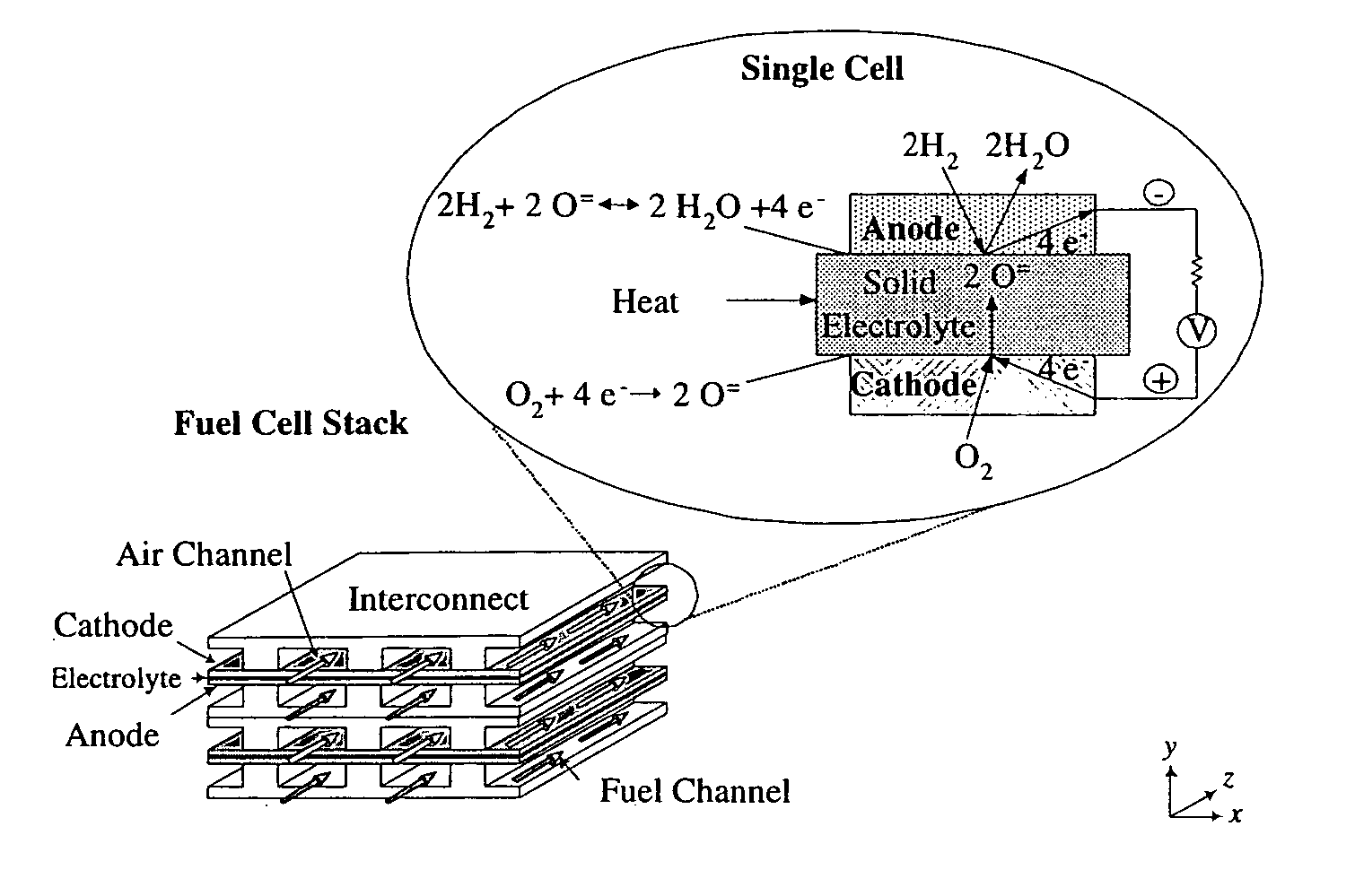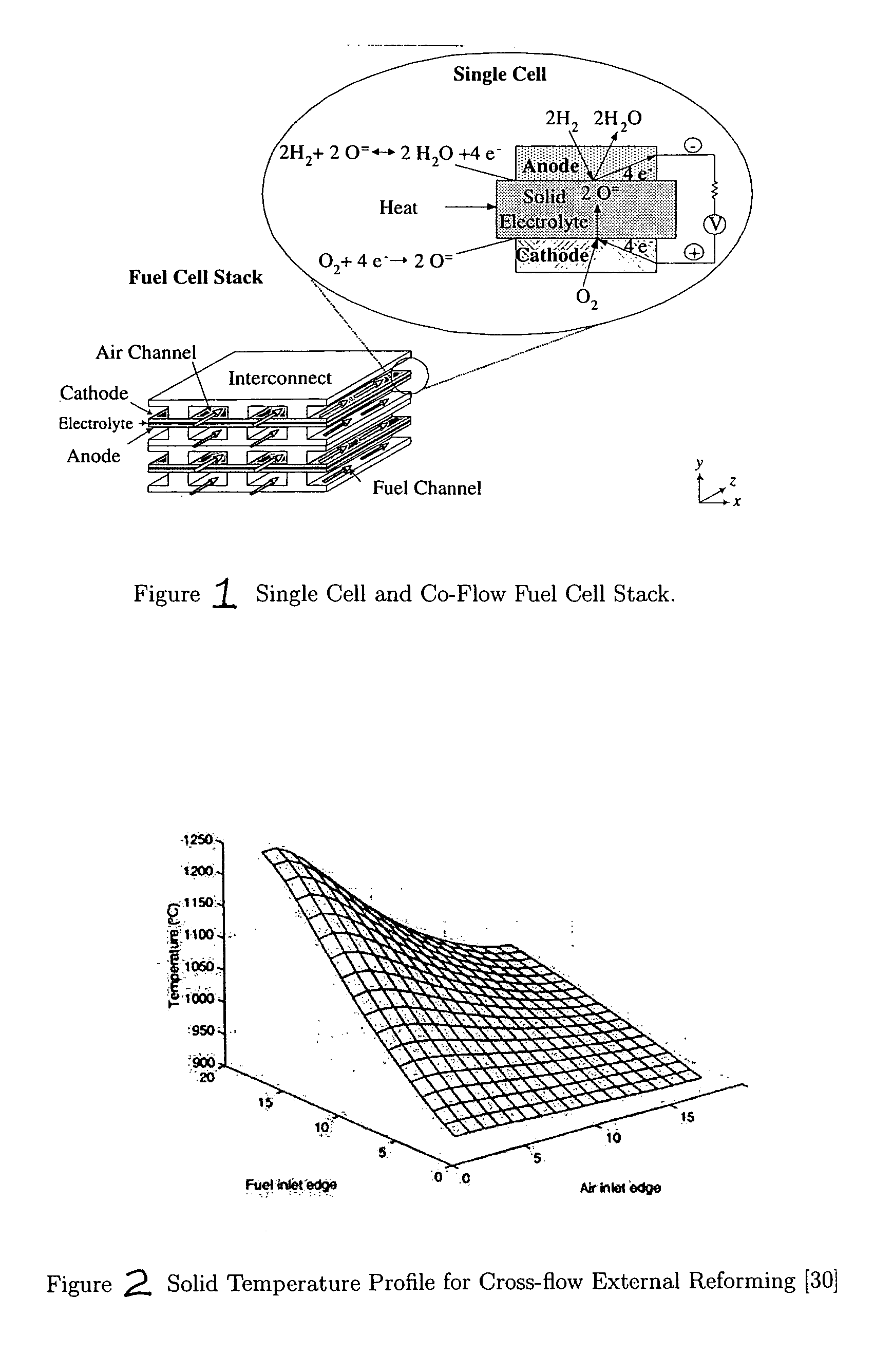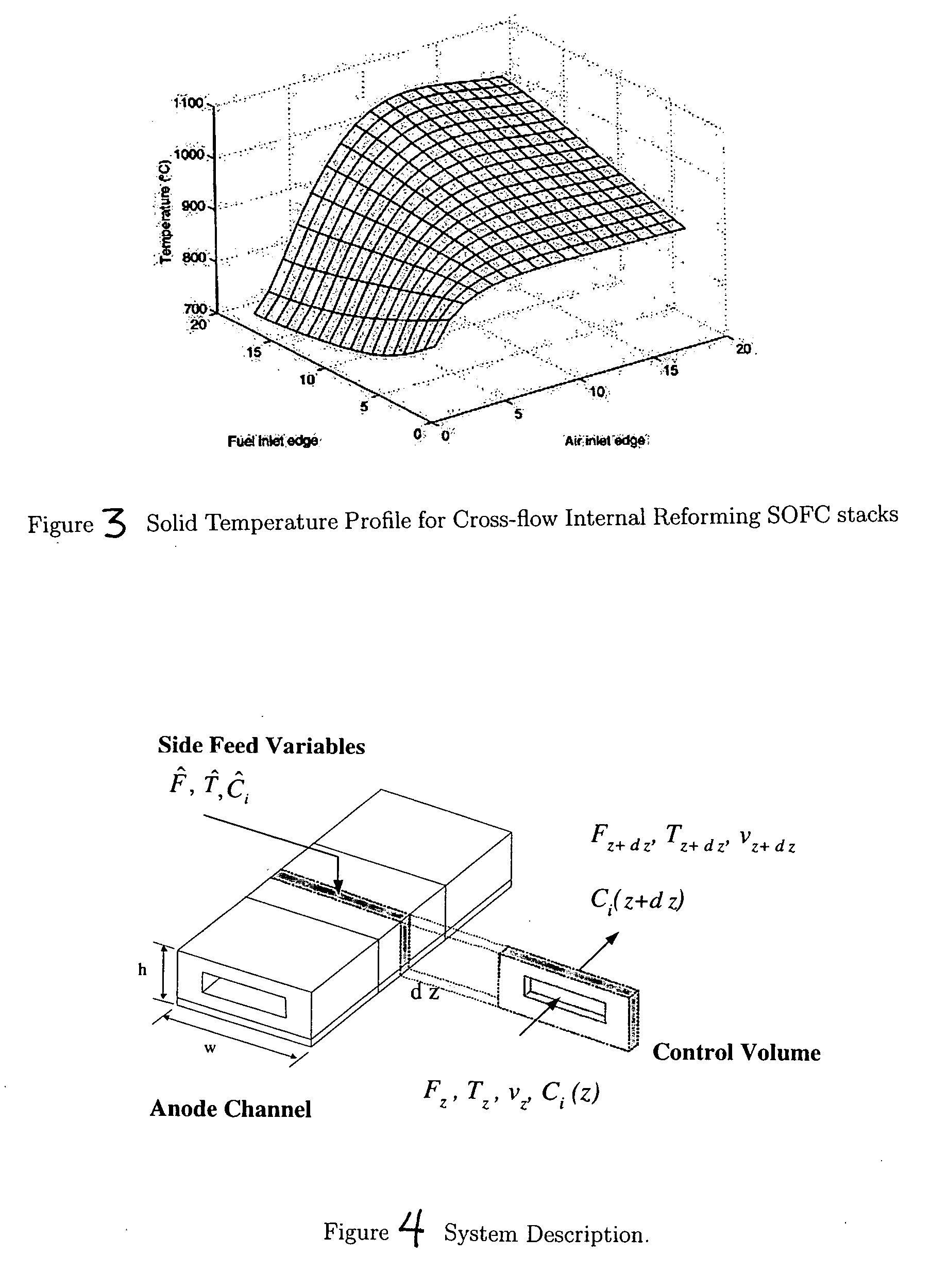Distributed feed fuel cell stack
a fuel cell and stack technology, applied in the direction of fuel cells, fuel cells, electrochemical generators, etc., can solve the problems of poor thermal and fuel management, short life-span or even stack damage, and large temperature variations in the stack, so as to improve thermal management, improve thermal distribution, mass and thermal integration, and improve thermal management.
- Summary
- Abstract
- Description
- Claims
- Application Information
AI Technical Summary
Benefits of technology
Problems solved by technology
Method used
Image
Examples
Embodiment Construction
Kinetics and Operation
[0035] A fuel cell stack consist of four building blocks, which are anode, cathode, electrolyte and interconnect, as shown in FIG. 1. The oxidant, usually air, is fed on the cathode side to provide the needed oxygen for the electrochemical reaction, in addition, it serves as a coolant, when the fuel cell is hydrogen fed. However, air provides the heat needed, when the fuel cell stack is methane fed (i.e. internal reforming stack). The fuel is fed on the anode side. Oxygen ions are conducted by the electrolyte and electrons are conducted by the interconnect 2.1. Equations 2.1 and 2.2 are the anode hydrogen and the cathode electrochemical reactions respectively. H2+O=⟶H2O+2 e-(2.1)12O2+2 e-⟶O=(2.2)
The sum of Equations 2.1 and 2.2 will lead to the cell overall reaction, which is shown below.
The sum of Equations 2.1 and 2.2 will lead to the cell overall reaction, which is shown below. H2+12 O2⟶H2O(2.3)
[0036] As the reaction described by Equation 2.3...
PUM
 Login to View More
Login to View More Abstract
Description
Claims
Application Information
 Login to View More
Login to View More - R&D
- Intellectual Property
- Life Sciences
- Materials
- Tech Scout
- Unparalleled Data Quality
- Higher Quality Content
- 60% Fewer Hallucinations
Browse by: Latest US Patents, China's latest patents, Technical Efficacy Thesaurus, Application Domain, Technology Topic, Popular Technical Reports.
© 2025 PatSnap. All rights reserved.Legal|Privacy policy|Modern Slavery Act Transparency Statement|Sitemap|About US| Contact US: help@patsnap.com



